Typical Pencil Grasp Development for Writing
Affiliate and Referral links are used below to promote products I love and recommend. I receive a commission on any purchases made through these links. Please see my disclosure policy for more details. As an Amazon Associate, I earn from qualifying purchases.
Proper pencil grasp development for writing starts a lot earlier than you think in children. From the time your child starts grasping for objects with their hands, they are developing a grasp.
If your child has ever received or been evaluated for Occupational Therapy, this is one thing that the therapist will be looking at when assessing their handwriting skills.
Before we get started, here are some term definitions that will help explain some of the hand grasps:
- Radial – Thumb side of the hand
- Digital – Finger or pinkie side of the hand; can also mean digits, as in fingers
- Palmar – Palm side, or inside part of the hand
- Supinate – Palm facing up or forwards
- Pronate – Palm facing down or backward
Typical Pencil Grasp Development in Kids
Let's start at the beginning. Again, these are average age ranges; every child is different. If you do suspect your child is behind in their development, please talk to your pediatrician or consult with your local Occupational Therapist.
Crude Palmar Grasp – 3-5 Months Old
- By age 3.9 months, your baby should be able to grasp a rattle or other objects.
- By age 5.2 months, they reach for objects with their whole arm using a crude palmar grasp (grabbing at objects with the pinkie side, or palmar side, of their hand. The thumb is not being used at this time.
Palmar Grasp – 6 Months Old
Your child will start using their entire hand to grasp objects, including some thumb movement. This is called a Palmar Grasp.
Radial Palmar Grasp – 7 Months Old
They will begin to involve the thumb and all fingers while using more of the thumb side of their hand to grab objects or using a radial palmar grasp.
Raking Grasp – 8 Months Old
By 8 months, your child will start to use a raking-type grasp. This involves bending (or flexing) the fingers to bring objects into the hand and closer to them.
Radial Digital Grasp – 8-10 Months
Between 8-10 months old your child will start to perfect the pincer grasp using a Radial Digital Grasp & Inferior Pincer Grasp. A radial grasp refers to the fingers from the middle finger to the thumb doing the grasping. As pictured, the child tends to use the pads of their fingers to grasp instead of the tips.
Inferior Pincer & Pincer Grasp – 10 Months Old
By the age of 10.2 months, they should be able to use a thumb-finger grasp (pincer grasp). The difference between the Inferior Pincer Grasp and a regular Pincer grasp is all in the placement of the fingertips.
The index and thumb are used for this grasp. If the pads of the fingers are holding the object, that is an Inferior Pincer Grasp. A true pincer grasp uses the tips of the pointer finger and thumb.
You may also see this referred to as the “Pincher” grasp; however, the correct spelling is “Pincer”.
Palmar Supinate Grasp – 12-15 months old
At this age, a young toddler begins to use a palmar supinate grasp. It is a fisted grasp with the thumb wrapped at the top of the writing utensil. This is usually accompanied by scribbling. This is considered a primitive grasp.
Digital Pronate Grasp – 2-3 Years Old
By 2-3 years old, a child moves to a digital pronate grasp, pictured below. This is the beginning of an efficient-looking hand grasp. The fingers are now pointed down towards the bottom of the writing utensil; however, all the fingers are being used along with a lot of whole arm movements. This is also a common grasp for self-feeding with utensils.
Static Tripod and/or Quadrupod Grasp – 3-4 Years Old
By age 3 to 4, a child will switch to a static tripod grasp or quadrupod grasp. They hold the writing utensils crudely and use the whole pads of their fingers on the writing utensil. There also may still be some wrist and forearm movement to move the pencil, with the fingers not moving, or static.
The static tripod grasp is a 3 finger grasp, two fingers pinching the writing utensil and the 3rd (middle) finger tucked to the side of the pencil, forming a tripod. The 4th and 5th fingers are usually static next to these fingers and do not tuck into the palm of the hand.
A quadrupod grasp is also referred to as a 4-finger grasp, with 3 fingers being on the pencil and then tucked on the 4th finger. It can also be static or dynamic. Dynamic is pictured below.
Dynamic Tripod Grasp – 5-6 Years Old
By the time your child hits kindergarten, they will use the most mature grasp, the dynamic tripod/quadruped grasp. They will use the tips of their fingers on the writing utensil and also hold the crayon/pencil more at an angle than vertically. This is much like an adult grasp.
Their finger movements are also dynamic, which means they move back in forth without any forearm or minimal wrist movement (the arm will be resting on the table or writing surface instead of floating above). This grasp is also referred to as a 3-finger grasp, with the first 2 fingers on the pencil while resting on the middle finger. The 4th and 5th fingers are tucked into the palm of the hand and help to stabilize the hand on the table.
Again, these are average age ranges, and every child is different. This does give you a good idea of what to look for as your child starts to explore the wonderful world of writing.
Hand Grasp Development Reference Cards
If you would like to have printable cards of all these hand grasps, complete with descriptions and photos, you can check out my hand grasp development cards here.
There is a digital and printed version available. They are great to have on hand in your classroom as you evaluate students. Or in your home or therapy sessions as a handy resource and reminder.
References
“From Rattles to Writing – A Parent's Guide to Hand Skills” – Barbara Smith, MS, OTR/L
“The Handwriting Book” – Functional Skills for Kids Pediatric Therapist Team
“Pencil Grip – A Descriptive Model and Four Empirical Studies.” – Ann-Sofie Selin, Master's in Special Education.
“The Fine Motor Olympics Manual” – Marcia P. Bridgeman
You May Also Like:

Heather Greutman, COTA
Heather Greutman is a Certified Occupational Therapy Assistant with experience in school-based OT services for preschool through high school. She uses her background to share child development tips, tools, and strategies for parents, educators, and therapists. She is the author of many ebooks including The Basics of Fine Motor Skills, and Basics of Pre-Writing Skills, and co-author of Sensory Processing Explained: A Handbook for Parents and Educators.
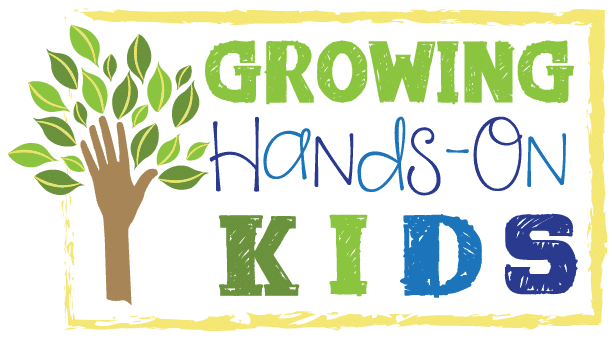
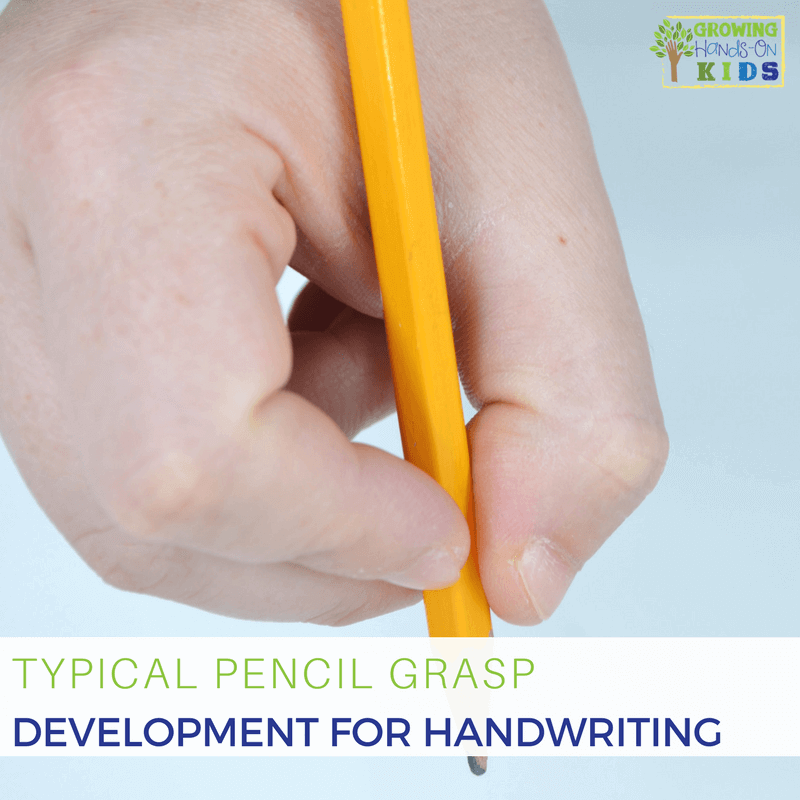
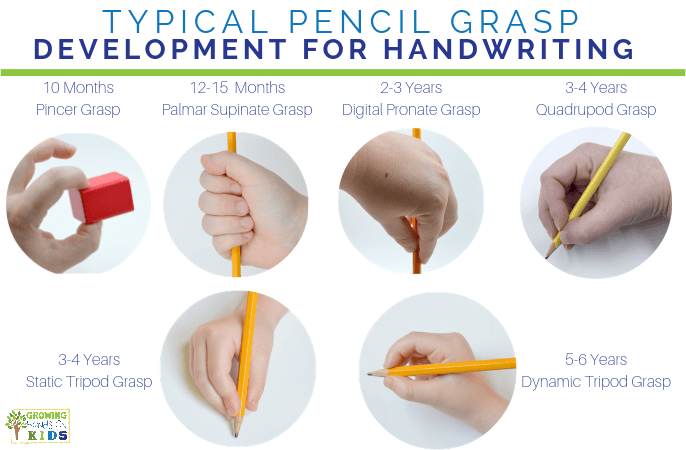
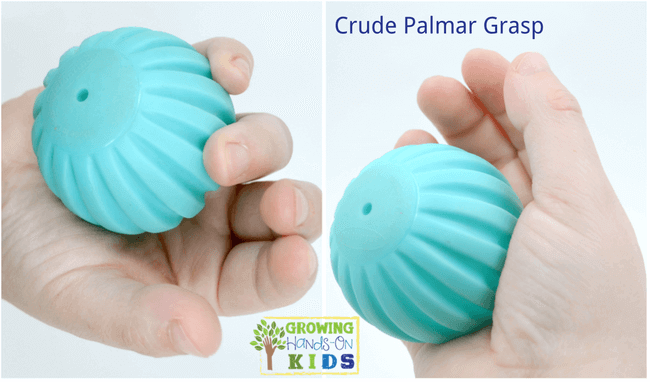
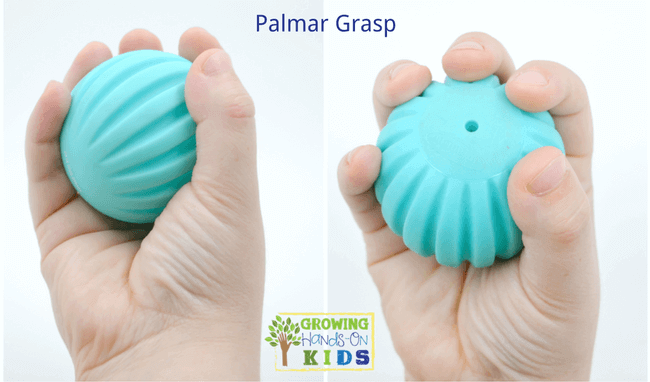
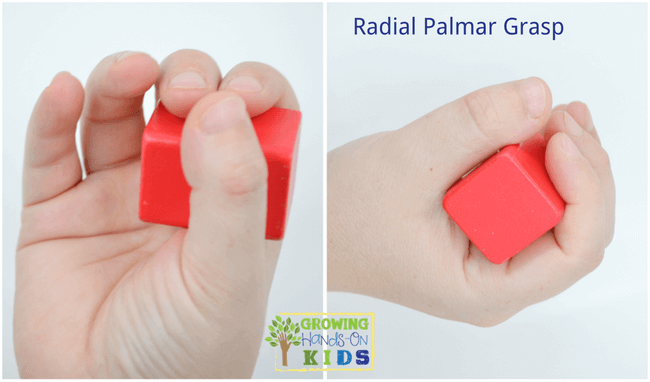
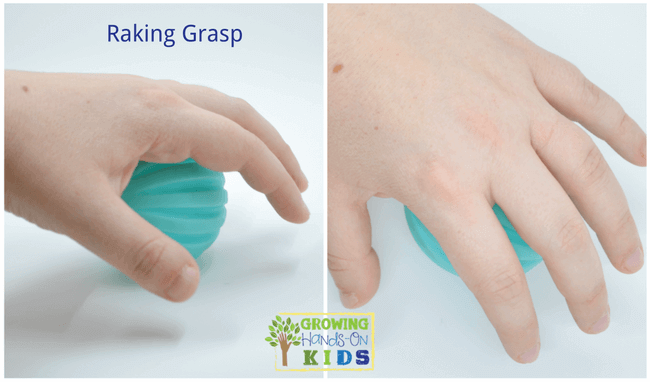
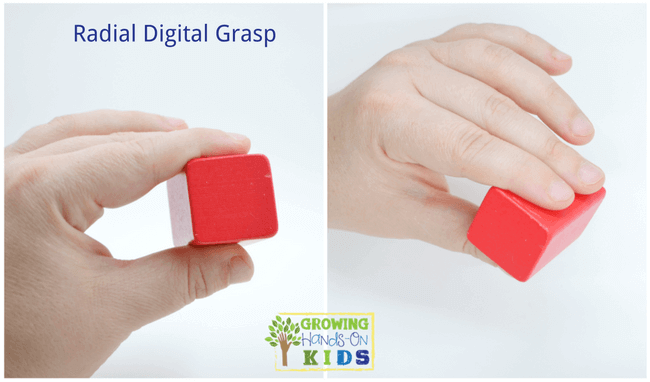
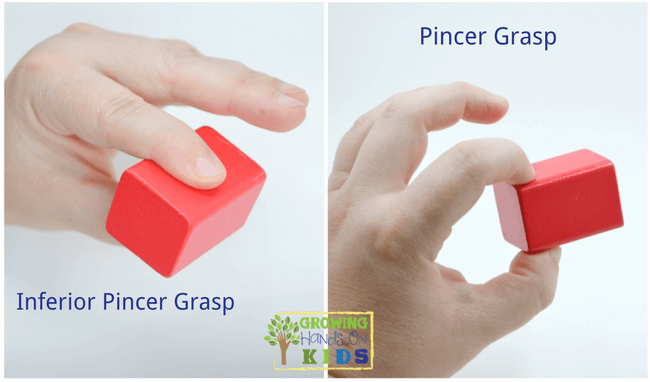
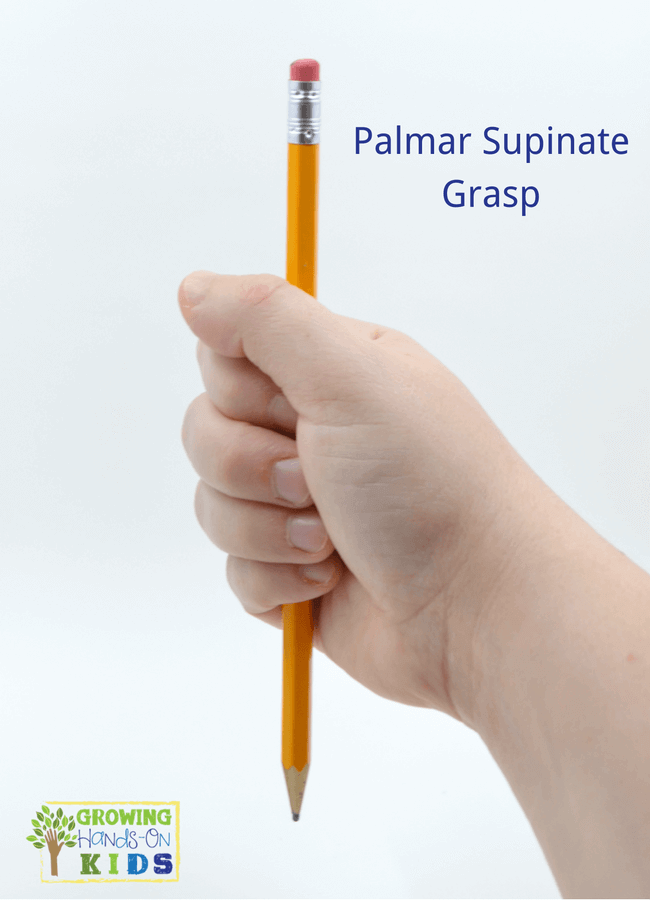
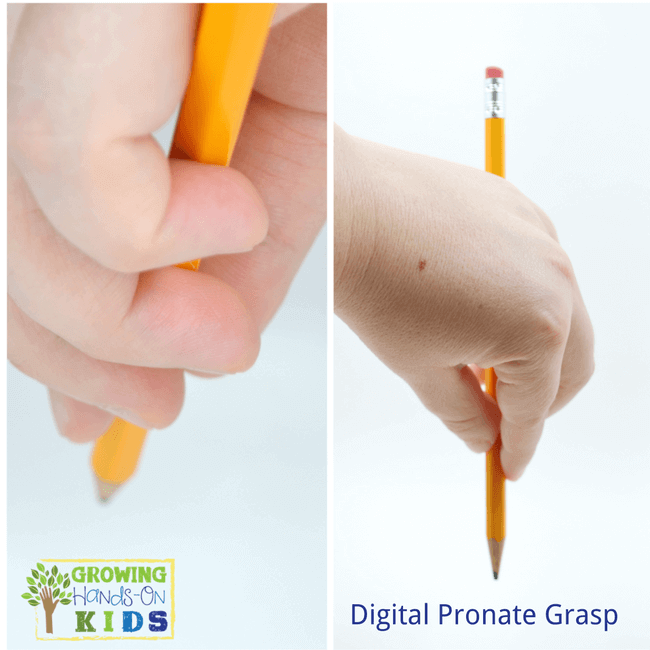
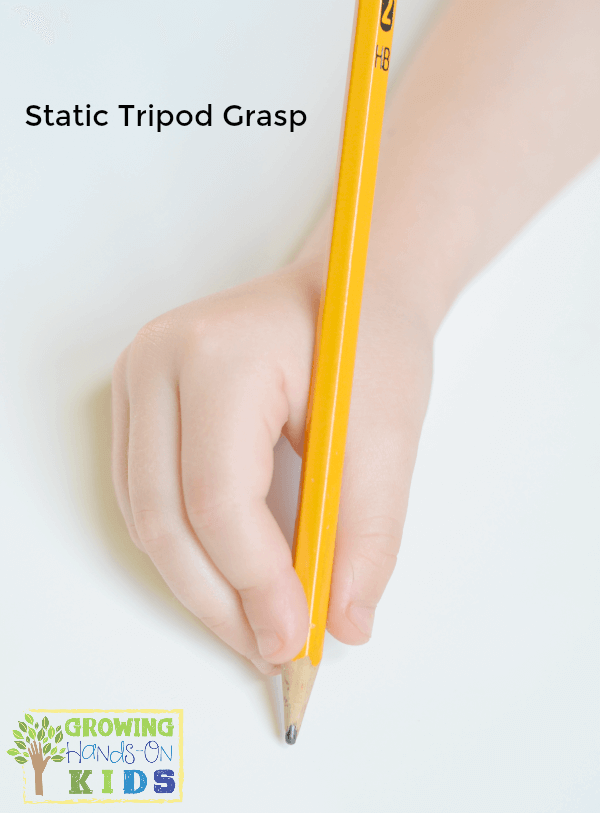
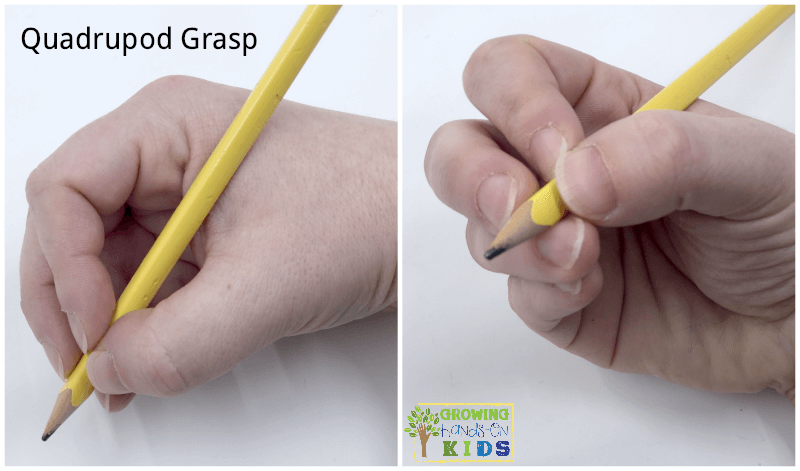
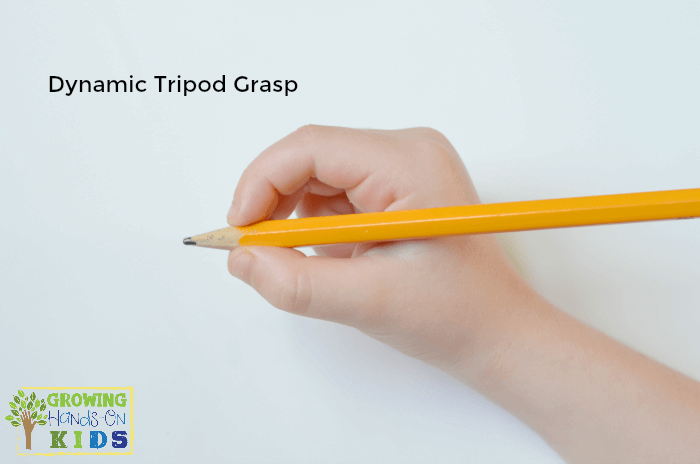
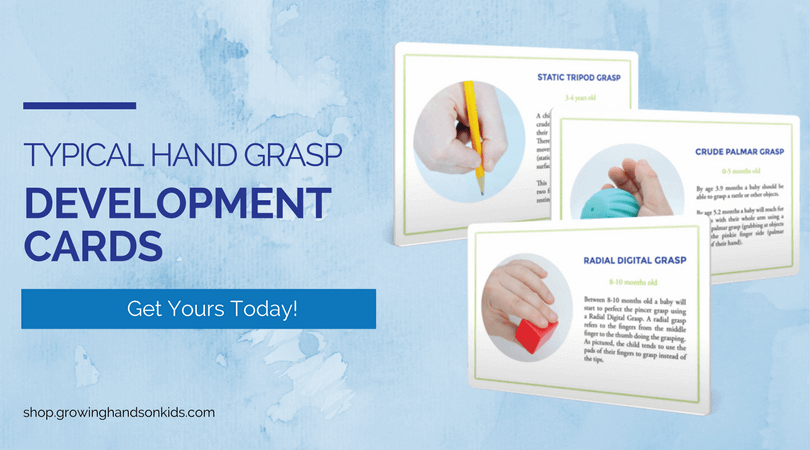
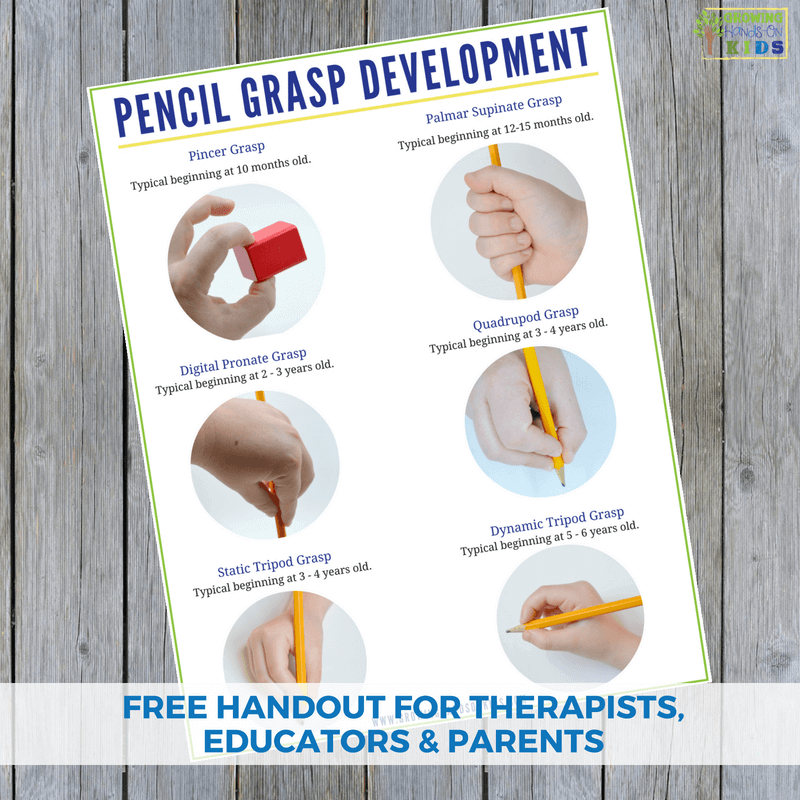

I am loving all of your articles. Do you have printables versions of your various pages?
Very helpful and informative. Thank you